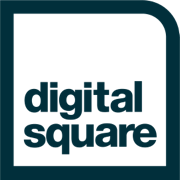Vxnaid
Vxnaid
Johnson & Johnson (J&J) Global Public Health team have developed and matured the Vxnaid vaccine monitoring platform over several years. The platform initially was used to support Ebola vaccination studies in the context of a vaccine product development trajectory but quickly was applied in the Public Health context of an Ebola vaccination campaign. Subsequently, the utility and architecture of the platform was broadened to make it supportive of any vaccine type and the platform has since been used in the context of Covid-19 vaccinations. The technology is built on an OpenMRS open source backbone.
Approach
Vxnaid is an integrated digital platform ensuring correct administration of vaccines, identification of vaccines, follow-up/recall of vaccinated persons and understanding of campaign effectiveness. This is achieved via the three modules of the platform:
Module I: This module offers various identification methods to accurately identify and subsequently recognize vaccines throughout campaign visits. Methods offered vary from manual entry of a unique PID (participant Identifier), scanning of a bar code that embeds the unique PID or biometric enabled iris scanning (for those wanting to use a non-J&J a proprietary license).
Module II: A dashboard of reports that can be consulted that provides visualization of enrollment rate, an aggregated view of numbers of persons vaccinated in a campaign, numbers of persons vaccinated at health center level, compliance numbers for follow-up vaccine administration (when 2nd or subsequent dose vaccinations should be administered within a preferred dosing window), operational reports for field teams highlighting missed visits of vaccines and predicting numbers of vaccines anticipated to visit the health center in a given timeframe. Reports can be provided in excel or powerBI (pBI) format (if stakeholder has a Microsoft pBI account). Data can be exported in various file formats e.g., csv., excel, PDF and can be prepared from compatibility with DHIS2 database structures. If the stakeholder has a pBI account, the dashboard can be consulted on any mobile connected device such that the dashboard becomes portable.
Module III: An engagement module leverages mobile phone technology to deliver message content in the local language to a vaccine's mobile phone. Messages can have various delivery formats: pre-recorded voice messages, SMS or WhatsApp. This approach is used to recall vaccines for subsequent vaccination or follow-up clinic visits, share engagement messages, or deliver content to help dispel rumors. Small surveys can also be issued via this targeted communication approach.
The primary users of the system are those executing vaccination campaigns in the field as well as management functions overseeing the performance of the campaigns e.g. Ministries of Health.
Implementations
Individual modules of this platform have been deployed in Sierra Leone, Democratic Republic of Congo and the fully integrated platform has been deployed in its earlier version in Rwanda. WHO are currently using the integrated platform in support of their Solidarity Vaccines Trial running for now in Mali, Colombia, Philippines, Sierra Leone and Tanzania.
Resources
- Website: https://github.com/johnsonandjohnson/vxnaid/wiki
- Documentation: https://github.com/johnsonandjohnson/vxnaid
- Articles:
